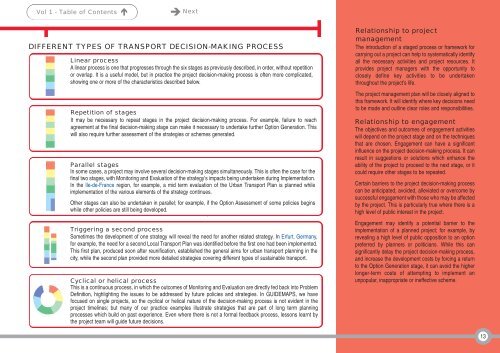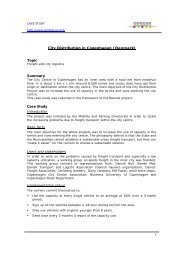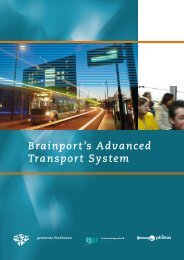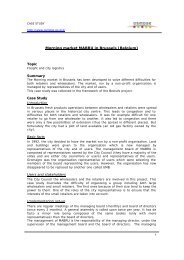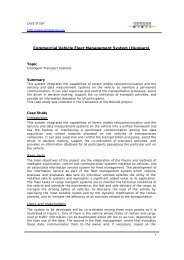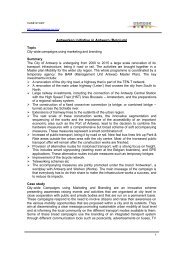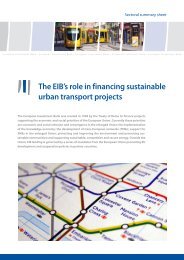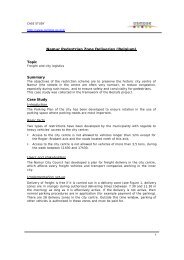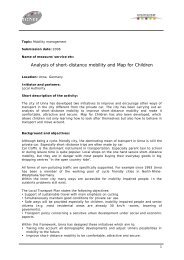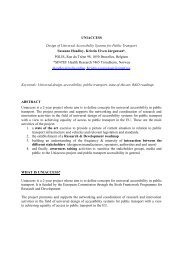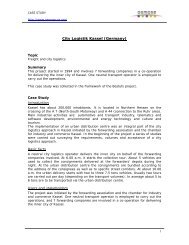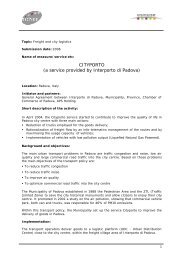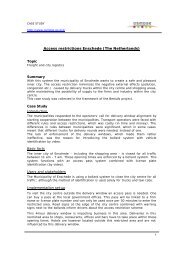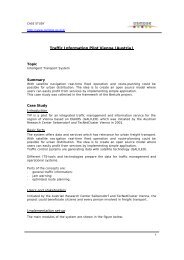Successful transport decision-making - Osmose
Successful transport decision-making - Osmose
Successful transport decision-making - Osmose
Create successful ePaper yourself
Turn your PDF publications into a flip-book with our unique Google optimized e-Paper software.
Vol 1 - Table of Contents <br />
Next<br />
DIFFERENT TYPES OF TRANSPORT DECISION-MAKING PROCESS<br />
Linear process<br />
A linear process is one that progresses through the six stages as previously described, in order, without repetition<br />
or overlap. It is a useful model, but in practice the project <strong>decision</strong>-<strong>making</strong> process is often more complicated,<br />
showing one or more of the characteristics described below.<br />
Repetition of stages<br />
It may be necessary to repeat stages in the project <strong>decision</strong>-<strong>making</strong> process. For example, failure to reach<br />
Linear<br />
agreement at the final <strong>decision</strong>-<strong>making</strong> stage can make it necessary to undertake further Option Generation. This<br />
process<br />
will also require further assessment of the strategies or schemes generated.<br />
Parallel stages<br />
In some cases, a project may involve several <strong>decision</strong>-<strong>making</strong> stages simultaneously. This is often the case for the<br />
final two stages, with Monitoring and Evaluation of the strategy’s impacts being undertaken during Implementation.<br />
In the Ile-de-France region, for example, a mid term evaluation of the Urban Transport Plan is planned while<br />
implementation of the various elements of the strategy continues.<br />
Other stages can also be undertaken in parallel; for example, if the Option Assessment of some policies begins<br />
Stages may<br />
while other policies are still being developed.<br />
be repeated<br />
Triggering a second process<br />
Sometimes the development of one strategy will reveal the need for another related strategy. In Erfurt, Germany,<br />
for example, the need for a second Local Transport Plan was identified before the first one had been implemented.<br />
This first plan, produced soon after reunification, established the general aims for urban <strong>transport</strong> planning in the<br />
city, while the second plan provided more detailed strategies covering different types of sustainable <strong>transport</strong>.<br />
Cyclical or helical process<br />
This is a continuous process, in which the outcomes of Monitoring and Evaluation are directly fed back into Problem<br />
Definition, highlighting the issues to be addressed by future policies and strategies. In GUIDEMAPS, we have<br />
focused on single projects, so the cyclical or helical nature of the <strong>decision</strong>-<strong>making</strong> process is not evident in the<br />
project timelines; but many of our practice examples illustrate strategies that are part of long term planning<br />
processes which build on past experience. Even where there Stages is not maya formal feedback process, lessons learnt by<br />
the project team will guide future <strong>decision</strong>s.<br />
overlap<br />
Relationship to project<br />
management<br />
The introduction of a staged process or framework for<br />
carrying out a project can help to systematically identify<br />
all the necessary activities and project resources. It<br />
provides project managers with the opportunity to<br />
closely define key activities to be undertaken<br />
throughout the project’s life.<br />
The project management plan will be closely aligned to<br />
this framework. It will identify where key <strong>decision</strong>s need<br />
to be made and outline clear roles and responsibilities.<br />
Relationship to engagement<br />
The objectives and outcomes of engagement activities<br />
will depend on the project stage and on the techniques<br />
that are chosen. Engagement can have a significant<br />
influence on the project <strong>decision</strong>-<strong>making</strong> process. It can<br />
result in suggestions or solutions which enhance the<br />
ability of the project to proceed to the next stage, or it<br />
could require other stages to be repeated.<br />
Certain barriers to the project <strong>decision</strong>-<strong>making</strong> process<br />
can be anticipated, avoided, alleviated or overcome by<br />
successful engagement with those who may be affected<br />
by the project. This is particularly true where there is a<br />
high level of public interest in the project.<br />
Engagement may identify a potential barrier to the<br />
implementation of a planned project; for example, by<br />
revealing a high level of public opposition to an option<br />
preferred by planners or politicians. While this can<br />
significantly delay the project <strong>decision</strong>-<strong>making</strong> process,<br />
and increase the development costs by forcing a return<br />
to the Option Generation stage, it can avoid the higher<br />
longer-term costs of attempting to implement an<br />
unpopular, inappropriate or ineffective scheme.<br />
13


